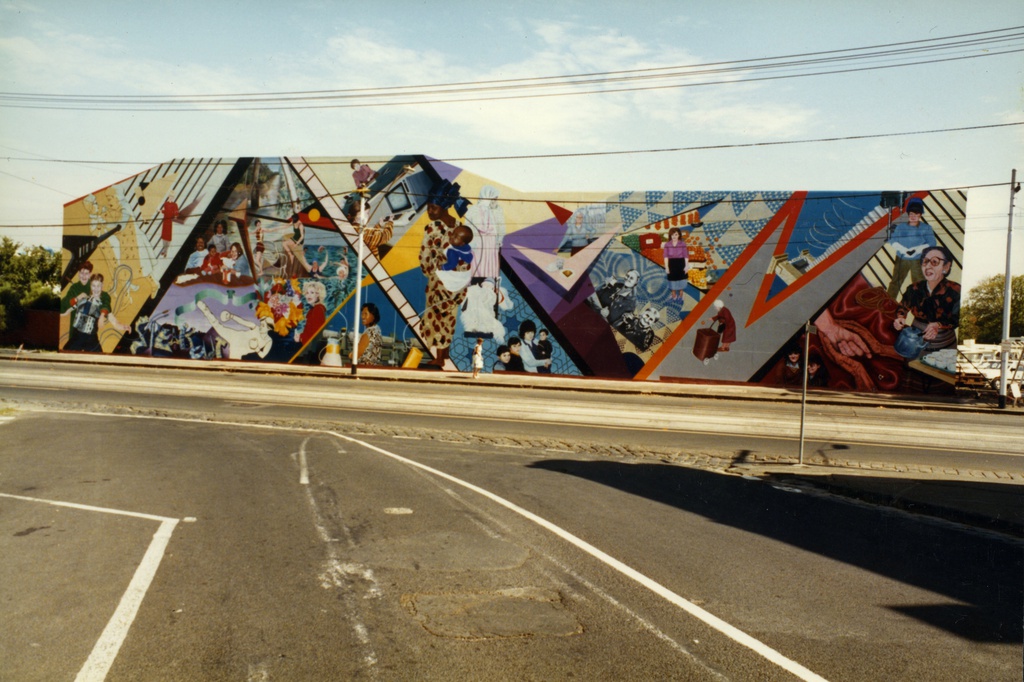
The Women’s Mural: From Bomboniere to Barbed Wire began with community consultations in 1985 and 1986 by the artists Megan Evans and Eve Glenn– who spoke with and photographed women in Northcote over a period of several months. Megan and Eve then translated these conversations and photos of the women, into an impressive 50 metre long and 12 metre high cacophony of local women’s images and landmarks celebrating the cultural diversity of the area.The Women’s Mural: From Bomboniere to Barbed Wire was perhaps the largest feminist mural in Melbourne from the heyday of second wave feminism and was a direct intervention shaking power structures in situ. Its imagery of non-stereotypical, everyday women, its celebration of women’s crafts and design elements and its presentation of an alternative image of women to that presented in commercial media, make it not only an icon of its time, but the questions that it raises about female visibility in public and the media are still relevant.Unlike other murals in the Melbourne - such as those by Keith Haring and Banksy- this mural was not prioritised for restoration. After three decades the original brilliance of the colours had faded and minor tagging covering the lower street level of the design had been present for years. But it was the capping of almost two-thirds of the mural in late February 2016 that brought this artwork back into the limelight. In October 2019, the final demise of the Women’s Mural came, as the wall was demolished for the redevelopment of the Gas and Fuel site by the State Government.A virtual tour of the mural was launched in December 2019 http://www.the-womens-mural-doc-project.com.au/virtualtour
by thewomensmuraldoproject on May 29, 2020Please login to comment on this item